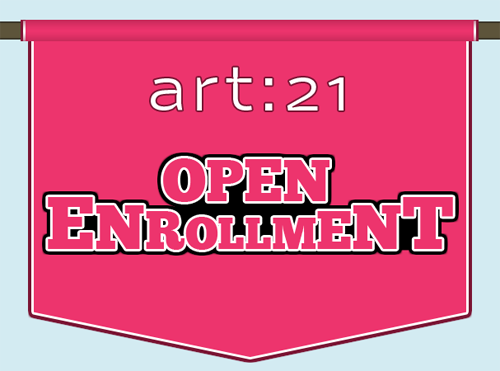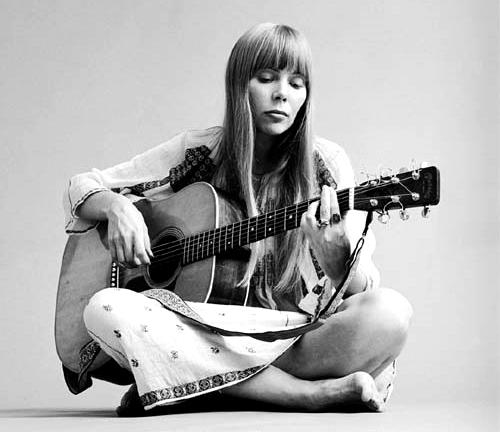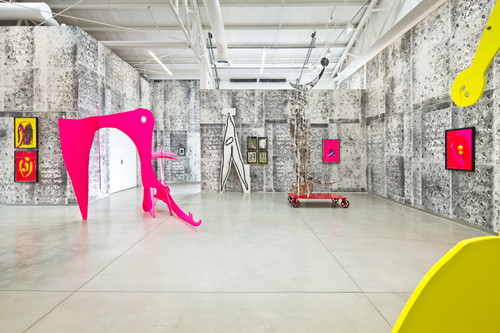I read two great biographies this summer: Robert Irwin’s biography, Seeing is Forgetting the Name of the Thing One Sees, by Lawrence Weschler, and Will You Take Me as I Am, Joni Mitchell’s Blue Period, by Michelle Mercer. I find truth in these types of narrative accounts–I put faith in seeing other creative lives unfold. This blog post is my attempt to tie together a myriad of ideas that I’ve been thinking about over the past couple of months, much in relation to these two. Joni Mitchell and Robert Irwin were both constricted by labels throughout their career, and turned to a dedicated “studio” practice (often resulting in reclusive behavior), to sustain their creative acts. I’d like to tie these biographical accounts to the art world at large. Rather than embracing labels and discipline categories, the introspective studio act of making is the current modus operandí for many young artists.
On Winning Swimsuit Competitions: I wouldn’t be the first person to call Joni Mitchell my emotional muse, but she actually despises being pigeon-holed as an introspective autobiographical songwriter. Her songs surely emote, but that is largely due to her undeniable ability to write music pictorially. “‘This is what you get when we get into Debussey-land,’ she says. ‘With La Mer you see the ocean. You see the butterflies. Mozart was very mathematical, you know, the agility is amazing, but it’s not very metaphorical. Not many people can paint pictures with notes’ (Mercer, 55).”
Aside from writing pictorially, Joni went through various periods in her work: yes, the introspective Blue album, but she also turned to jazz, and even produced a ballet. Endlessly, Joni was compared to Judy Collins and Joan Baez (to her dismay). Critics tried to typecast her as a “hippie madonna.” Mercer writes, “Mitchell’s a little like a beauty queen who seized the crown in the swimsuit competition–when she feels like she actually deserved to win for personality, talent, and her bright response on how to achieve world peace (Mercer, 6).”

Ferus Gallery Artists, 1959 photo by Patricia Faure. From left: John Altoon, Craig Kauffman, Allen Lynch, Ed Kienholz, Ed Moses, Robert Irwin, Billy Al Bengston.
Robert Irwin too was often corralled into specific genres that he didn’t identify with. “Irwin has had problems in being typecast as an artist of a particular sort: an abstract expressionist, a color-field painter, an op artist, a minimalist, a conceptualist, and so forth. While it’s true that his trajectory has often taken him through the domains of these movements, usually he is just passing through, hot on the trail of his own concerns (Weshler, 79).” As I reflect on my own artistic practice, I can’t help but think that placing categories on art-making is a bit outmoded. Many disciplines have specific dialogues embedded in the history of the discipline, which are extremely valid areas of inquiry, yet it seems that more often than not, labels and categories can become restricting for an artist. In today’s post-post-post-everything artworld, most artists don’t identify with just one medium. Art practice is melding and shapeshifting. Largely in tandem with our expanding cultural and technological field, artists are becoming renaissance men (and women): jacks of all trades.
In a catalogue essay for the show The Uncertainty of Objects and Ideas, Anne Ellegood describes the artists in the exhibit as “feeling compelled to propose alternative forms and models of production in order to challenge anything handed down with authority or stuck in the clutches of convention (Ellegood, 23).” Young artists like Matt Lipp, Thorston Brinkman, and Aaron Curry pay homage to art history, and then break all of its rules. We are at a threshold of sorts, one where finite rules, disciplines, and methodologies can be referenced but left where they are. These constructs were made so that we don’t have to use them anymore. Minimalism, conceptualism, post-conceptualism, etc…each of these movements posed questions that were explored and resolved. We have the freedom of moving forward away from the stagnant modes of the past, and into the beautifully convoluted and textured space of the future.
To Ibiza We Go:
One common ground here between the cultural renegades I read about this summer is an earnest and immersive studio practice. A studio practice that involved an intense self-investigation. Robert Irwin was more than anything invested in his progression of practice and a process of putting “one foot in front of the other” in the studio. Constantly posing questions for himself to answer: eschewing himself to Ibiza for eight months of silent meditation, then spending two years in the studio meditatively and laboriously painting and studying ten line paintings. Joni Mitchell was very invested in location as well, largely because landscape played so heavily into her songwriting. She constantly changed location depending on what would benefit her most at the time: moving from domestic living in LA to a hippie commune in Matala, Greece, to a monastic house she build in Vancouver. These places and experiences were her “studio,” and she was very dedicated to them. For the artists in The Uncertainty of Objects and Ideas, “studio practice is fundamental to their creative production…Within the safety of a structural framework delineated by material choices and working parameters, latent desires and ideas are allowed to flourish and become a vital part of the finished piece (Ellegood, 24).” These artists tend to look inward moreso than outward.
Now, I’m not suggesting that we all move to an island in the Mediterranean and live in silence. Rather, I’d like to point to this sort of introspection as a tool that artists can utilize (if nothing else, to stay sane) to battle the slew of labels and restrictions that come our way. While individual introspection can sometimes lead to its share of self-inflicted stresses, it can also lead to solace, and trust in the work you are making.







Pingback: Open Enrollment | Think About the Void | Art21 Blog
Pingback: Open Enrollment | Think About the Void | Art21 Blog
Pingback: Open Enrollment | Think About the Void | Uber Patrol - The Definitive Cool Guide
Pingback: Think About the Void | Lindsay Preston Zappas Writing